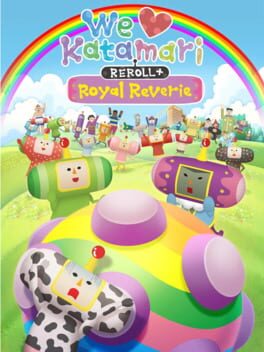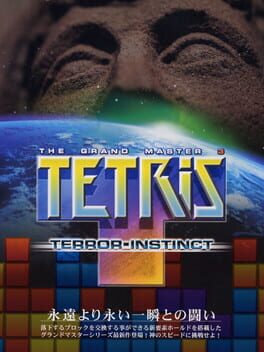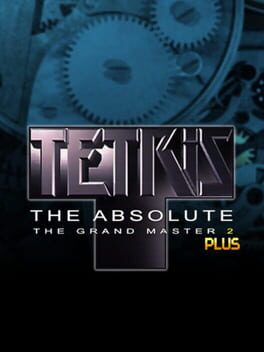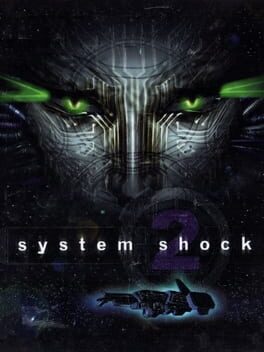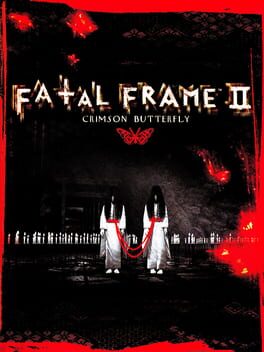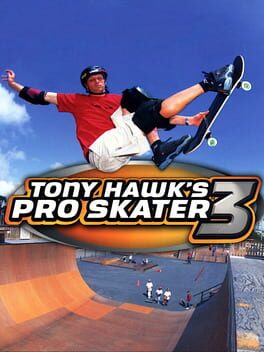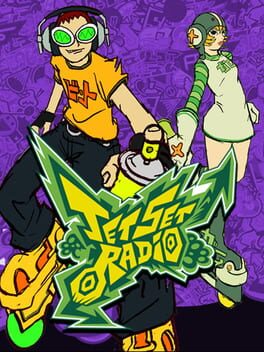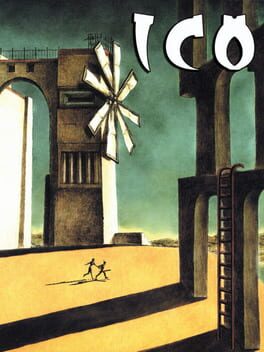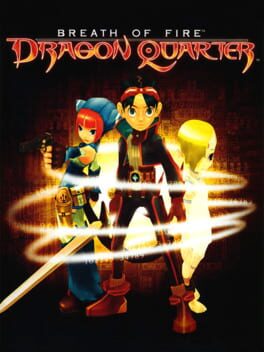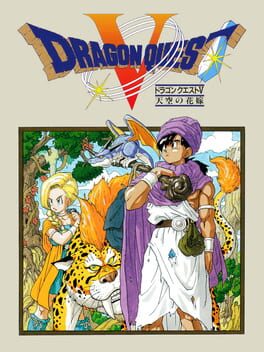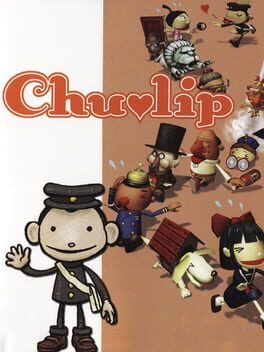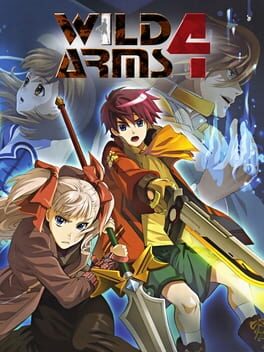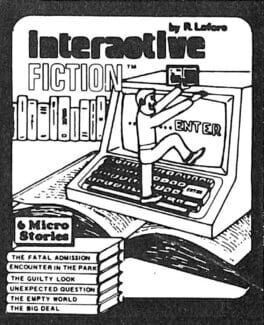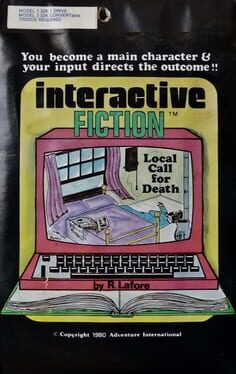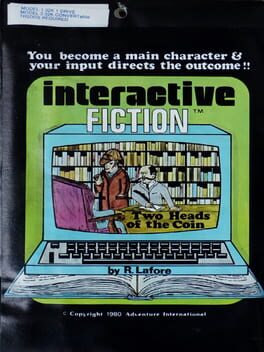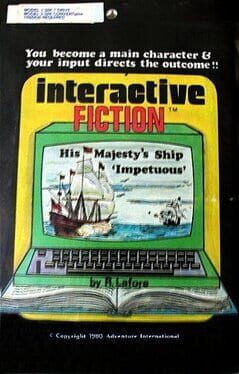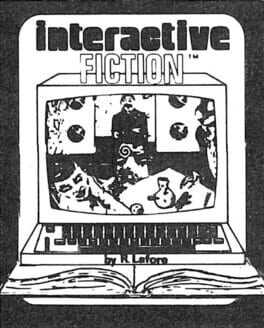ToxicYogurt
40 reviews liked by ToxicYogurt
I love Getting Over It and have beaten it hundreds of times. I was excited for this game, it looked the most similar to Getting Over It out of any other rage-bait game out there. Living up to the "foddian" name it talks about in the steam description.
But the core gameplay is just too annoying and painful. Like it literally hurts my hands to play this game for more than 10 minutes. Having to hold down the buttons and yoink my mouse super fast and hard to swing is like the least ergonomic activity in the world. So I'm refunding this game sorry.
The dev really did nail the style of Getting Over It perfectly though.
But the core gameplay is just too annoying and painful. Like it literally hurts my hands to play this game for more than 10 minutes. Having to hold down the buttons and yoink my mouse super fast and hard to swing is like the least ergonomic activity in the world. So I'm refunding this game sorry.
The dev really did nail the style of Getting Over It perfectly though.
Is it close to the Silent Hills of old? No not particularly.
Does it absolutely stumble on getting across some of its ideas and concepts? Yeah.
Are the chase sequences a bit rough? Yeah.
I still really fucked with this and everything it was doing. It gave me a dose of what I've wanted from Silent Hill for a long time, it had a vision and it sees that vision all the way through while trying to mix things up a bit.
I think it handles its themes of trauma and abuse trapping someone emotionally within cycles of self destructive and self distancing behaviors causing lashing out at anything that harms the ego and whatever normalcy one can cling onto fairly well.
I feel like even if it was a bit heavy handed at times (the beginning really tries to hammer home how depressed Anita is in ways that feel really corny) I cannot ignore the earnestness and the willingness to just fuckin try something here. The art direction, the atmosphere, the music, the tones.
No it's not Silent Hill 3 but it worked for me and captured me in ways that I really didn't expect. That last chunk of the game really fuckin hit me.
Does it absolutely stumble on getting across some of its ideas and concepts? Yeah.
Are the chase sequences a bit rough? Yeah.
I still really fucked with this and everything it was doing. It gave me a dose of what I've wanted from Silent Hill for a long time, it had a vision and it sees that vision all the way through while trying to mix things up a bit.
I think it handles its themes of trauma and abuse trapping someone emotionally within cycles of self destructive and self distancing behaviors causing lashing out at anything that harms the ego and whatever normalcy one can cling onto fairly well.
I feel like even if it was a bit heavy handed at times (the beginning really tries to hammer home how depressed Anita is in ways that feel really corny) I cannot ignore the earnestness and the willingness to just fuckin try something here. The art direction, the atmosphere, the music, the tones.
No it's not Silent Hill 3 but it worked for me and captured me in ways that I really didn't expect. That last chunk of the game really fuckin hit me.
It was hard to have high expectations of a free Silent Hill game put out by Konami after their numerous gaming crimes - losing Kojima, cashing in on pachinko, Ascension, to name a few - but Silent Hill: The Short Message, a game about grief, suicide and abuse, is WAY better than it has any right to be.
I will admit that the game pinches from P.T and a little Serial Experiments Lain, with a trashy J-emo script that has all the subtlety of.. well, a corridor covered in abusive post-it notes. But I don't hate that, I vibe with it. Sure, I think it could've benefited from being in its native Japanese language rather than English, let alone even the illusion of being set in bloody Germany, as some of the bullying language feels cliche. But the handling of the heavy themes and conclusion it reaches about the victims have a strong emotional impact, and, I must add, a much healthier take than Bloober's offensive The Medium.
But now for the game's main strengths. The boys are back! Akira Yamaoka's score is understated but stirring, the sound design creepy and enhancing the presence of Masahiro Ito's menacing new monster that hobbles after you down corridors with a stop-motion jitteriness. The pursuit sections are reminiscent of Shattered Memories but much more effective, claustrophobic and panic-inducing - they can be difficult and sometimes frustrating but get by on their short length. There’s not a great deal else in terms of gameplay beyond wandering a dilapidated apartment block, but the grimy design and atmosphere are enough to enjoy just moving through the eerie space, uncovering the story in various gameplay ‘loops.’
Of course, it can veer into amateur territory - the drawings are tad too Tumblr, the acting is mostly strong but occasionally a bit off, those sections in school corridors are a bit too 2013 for my liking - but I suppose the game is not made by a bunch of Kojimas.
However, for the first effort in a couple decades from a Konami-led Japanese team, it’s a rather satisfying return to form for Silent Hill. It’s not perfect, but it didn’t need to be, especially not when it had Ascension’s act to follow.
I will admit that the game pinches from P.T and a little Serial Experiments Lain, with a trashy J-emo script that has all the subtlety of.. well, a corridor covered in abusive post-it notes. But I don't hate that, I vibe with it. Sure, I think it could've benefited from being in its native Japanese language rather than English, let alone even the illusion of being set in bloody Germany, as some of the bullying language feels cliche. But the handling of the heavy themes and conclusion it reaches about the victims have a strong emotional impact, and, I must add, a much healthier take than Bloober's offensive The Medium.
But now for the game's main strengths. The boys are back! Akira Yamaoka's score is understated but stirring, the sound design creepy and enhancing the presence of Masahiro Ito's menacing new monster that hobbles after you down corridors with a stop-motion jitteriness. The pursuit sections are reminiscent of Shattered Memories but much more effective, claustrophobic and panic-inducing - they can be difficult and sometimes frustrating but get by on their short length. There’s not a great deal else in terms of gameplay beyond wandering a dilapidated apartment block, but the grimy design and atmosphere are enough to enjoy just moving through the eerie space, uncovering the story in various gameplay ‘loops.’
Of course, it can veer into amateur territory - the drawings are tad too Tumblr, the acting is mostly strong but occasionally a bit off, those sections in school corridors are a bit too 2013 for my liking - but I suppose the game is not made by a bunch of Kojimas.
However, for the first effort in a couple decades from a Konami-led Japanese team, it’s a rather satisfying return to form for Silent Hill. It’s not perfect, but it didn’t need to be, especially not when it had Ascension’s act to follow.
Prey
2017
“In short, contingency and freedom, it all means creation; freedom for us is creation.” - Henri Bergson
Prey is a video game about action. An immediate question may arise: what video game isn’t about action? A fair enough question since I haven’t set forth any terms. What I mean here is the specific action that philosopher Henri Bergson defined in his book Matter and Memory where he writes, “The degree of independence of which a living being is master, or, as we shall say, the zone of indetermination which surrounds its activity, allows, then, of an a priori estimate of the number and the distance of the things with which it is in relation.” For the most part, video games are constricted experiences, designed in ways that create illusions of action and what action always becomes: creative choice. Video games are limited in a way that we voluntarily ignore; the individual act of playing them already satisfies most base desires. This is not a critique of the medium, but an explanation of how it functions. Video games cannot account for choice (and usually when they try to, they fail spectacularly). The BioShock series is all about this for example. However, Prey, and by extension the entire genre of immersive sims, were created with the intention to capture real-life agency in a virtual world. Prey does this best, partly because these philosophical underpinnings are finally brought to the surface and commented on in meaningful ways — a cohesion only really found in games like Cruelty Squad, Disco Elysium, Pathologic, and Planescape: Torment. If video games are by design vessels for determinism, then Prey is the yolk finally breaking and providing an argument for free will. Again, in the Bergsonian sense, with free will forming from the actions that reflect the personality of a self (an idea explored in his book, Time and Free Will). In immersive sim fashion, such agency is expressed in every crevice of its game design with Prey having an untold number of ways to approach each situation you find yourself in.
In this manner, the game itself plays remarkably like System Shock 2. I had dropped Prey years ago because I played it like an FPS, I am not sure why I exactly did this; having played Dishonored as a teenager I knew what immersive sims were on some level, but I wasn’t making use of any of Prey’s systems. My old save was still there thanks to Steam’s cloud save feature and by the time I got to where I had left off originally, I had put six hours into the game compared to two. This anecdote alone is proof to me that immersive sim deserves to be categorized as its own genre, an opinion with some detractors who only want it to be labeled as a “design philosophy” or think these games are at their core just RPGs or FPS’ like I originally treated Prey as and had a monumentally worse time. Back to System Shock 2 though, having now played that game and it now sitting comfortably in some nebulous top 10 spot for me, Prey clicked from the start. And now that I have finished it, I can comfortably say that Prey is a better game. The freedom of Prey’s mechanics isn’t only there to birth emergent gameplay, the hallmark of immersive sims that makes it my favorite genre, but to make a point about video games and like all great fiction, life itself. The number of tools and systems at play in games like System Shock 2 are there so you can have a different experience with them each time and treat these virtual landscapes as real, lived-in spaces; this design is so open-ended that the developers themselves cannot account for every variable. I was able to sequence break Prey in a few situations thanks to getting creative with the GLOO gun and instead of that feeling only like an emergent discovery, it felt directly tied to how the game presented itself on every level. The choice to act in these ways, like reverting back to a newborn who lacks spatial awareness and forgetting where a staircase was so I created a needless parkour arena out of the reactor core while various Typhon attempted to slaughter me and constantly made me fall back down — while proof that I need to get a new prescription for my glasses — revealed the game’s core philosophy as a game where choice finally matters and the creative potential of freedom that brings.
Prey’s response to System Shock 2’s psi abilities is the ever-creative Typhon powers which you can get by installing neuromods, the game's version of upgrade modules. There are six total categories for neuromods with many different sub-pathways in them, although three of them are for human upgrades like hacking, repair, and stealth and then three for the Typhon powers which you gain through researching the various types of Typhon on Talos I. You can mix and match these to your heart's desire, or only play with one, or neither. Here again, though, Prey is able to take a standard element of game design and breathe new life into it by exploring how neuromods are made and their effects on the people who install them. What exactly does it mean to be human? What does it mean to be human when you alter yourself with the ability to morph into a coffee cup and roll around before transforming back and hitting an unsuspecting goo monster with a wrench?
Having only talked about Prey’s gameplay up to this point, gameplay that if you have played one of the other 40 immersive sims that have been made in the last 30 years might not strike you as needing such philosophical analysis, it is then paramount to detail some of Prey’s thematic elements from its story, where all this philosophy is at the forefront. It isn’t that Prey is such an obvious standout in its own genre gameplaywise but that it coalesces so seamlessly with its story-driven themes in fully artistic and emotional ways.
It is then of course no surprise that Chris Avellone helped write this game alongside Raphaël Colantonio and Ricardo Bare (Prey’s director and lead designer respectively), for Avellone’s magnum opus Planescape: Torment is centered around the principle question, “What can change the nature of a man?” and it has a definitive answer: choice. Prey follows this path, not in a derivative way, but in the same philosophical fashion. According to the philosopher Gilles Deleuze, the foundational aspect of our reality is that of difference, in this regard the entire notion of a Being, or anything static, or any notion of a true self or an essence is shattered and disposed of. All we are, all there is, is Becoming. Identity is forgone in the place of a multiplicity of difference and any repetitions will always be different; change is the only constant, as the character January states near the end of the game, “the ‘real’ Morgan is a fiction.” The process of Becoming is integral; it is not that Morgan Yu is there to be a measly projection, there are far too many videos and audiologs of them to be considered a blank slate character, it is that with every action they take Morgan becomes someone new — it is difference all the way down.
This underlying ontology gives way to a system of ethics as well, which is most notably present in how the game goes about its main quest and endings that January, Alex Yu, Dr. Igwe, and Mikhaila Ilyushin all play their respective parts in. Prey makes use of the trolley problem — a notoriously boring thought experiment that exists to make utilitarians think too highly of themselves — in a thought-provoking way. Which is frankly speaking revolutionary. While the more overarching elements are not something I can delve into without taking Prey’s climactic catharsis away from anyone reading this who hasn’t played it yet — the ethical parts of Prey are just as present in its side content. Talos I, the setting of Prey, has one very striking difference to the Immersive Sim in Space that it owes its existence to: humans who aren’t dead the second the game begins. Another revolutionary design choice from Arkane. How you choose to interact with these struggling survivors is going to define you, to the point that if you play the game “empathetically” you will receive an achievement titled “I and Thou,” which I will eat a shoe if that is somehow not a direct reference to Martin Buber’s book of the same name. Side quests where you can find Mikhaila’s medicine or get a piano recording so Dr. Igwe can hold onto a song that he and his now-dead wife loved, to helping a stuck escape pod launch all exist to reflect your approach to Talos I and a seemingly unstoppable threat that has the potential to reach Earth and likely drive humanity to extinction. All throughout these side quests you will receive radio transmissions from January, the most extreme deontologist in fiction, commenting on your behavior. It’s a small station, orbiting a moon that orbits an even bigger world. Who are you, who are these people, in the face of a threat this large? Should you be taking all these diversions to give them comfort, especially if this robot with your voice wants you to blow up the whole place? Well, you’re a human, aren’t you? The choice is yours.
While much of Prey uses high-concept philosophy to get across its sci-fi adventure, it is in these moments of humanity where the game truly shines. There is much art that falls on its face for trying to intellectualize itself, combining theory with fiction in a way that is fun to experience is a difficult task, but Prey excels at it. In a medium that so often plays it safe, Prey goes as far as it can to question you. Our bodies are constructed by action, our perception is tied to the freedom this gives us, and so all we are left with is an endless sea of choices. We all stand on the precipice — anxiety becomes overwhelming in the face of it, but the task at hand is to push forward. These choices will constantly change us or be changed by us. You are not the same person you were yesterday. Neither was Morgan Yu.
Prey is a video game about action. An immediate question may arise: what video game isn’t about action? A fair enough question since I haven’t set forth any terms. What I mean here is the specific action that philosopher Henri Bergson defined in his book Matter and Memory where he writes, “The degree of independence of which a living being is master, or, as we shall say, the zone of indetermination which surrounds its activity, allows, then, of an a priori estimate of the number and the distance of the things with which it is in relation.” For the most part, video games are constricted experiences, designed in ways that create illusions of action and what action always becomes: creative choice. Video games are limited in a way that we voluntarily ignore; the individual act of playing them already satisfies most base desires. This is not a critique of the medium, but an explanation of how it functions. Video games cannot account for choice (and usually when they try to, they fail spectacularly). The BioShock series is all about this for example. However, Prey, and by extension the entire genre of immersive sims, were created with the intention to capture real-life agency in a virtual world. Prey does this best, partly because these philosophical underpinnings are finally brought to the surface and commented on in meaningful ways — a cohesion only really found in games like Cruelty Squad, Disco Elysium, Pathologic, and Planescape: Torment. If video games are by design vessels for determinism, then Prey is the yolk finally breaking and providing an argument for free will. Again, in the Bergsonian sense, with free will forming from the actions that reflect the personality of a self (an idea explored in his book, Time and Free Will). In immersive sim fashion, such agency is expressed in every crevice of its game design with Prey having an untold number of ways to approach each situation you find yourself in.
In this manner, the game itself plays remarkably like System Shock 2. I had dropped Prey years ago because I played it like an FPS, I am not sure why I exactly did this; having played Dishonored as a teenager I knew what immersive sims were on some level, but I wasn’t making use of any of Prey’s systems. My old save was still there thanks to Steam’s cloud save feature and by the time I got to where I had left off originally, I had put six hours into the game compared to two. This anecdote alone is proof to me that immersive sim deserves to be categorized as its own genre, an opinion with some detractors who only want it to be labeled as a “design philosophy” or think these games are at their core just RPGs or FPS’ like I originally treated Prey as and had a monumentally worse time. Back to System Shock 2 though, having now played that game and it now sitting comfortably in some nebulous top 10 spot for me, Prey clicked from the start. And now that I have finished it, I can comfortably say that Prey is a better game. The freedom of Prey’s mechanics isn’t only there to birth emergent gameplay, the hallmark of immersive sims that makes it my favorite genre, but to make a point about video games and like all great fiction, life itself. The number of tools and systems at play in games like System Shock 2 are there so you can have a different experience with them each time and treat these virtual landscapes as real, lived-in spaces; this design is so open-ended that the developers themselves cannot account for every variable. I was able to sequence break Prey in a few situations thanks to getting creative with the GLOO gun and instead of that feeling only like an emergent discovery, it felt directly tied to how the game presented itself on every level. The choice to act in these ways, like reverting back to a newborn who lacks spatial awareness and forgetting where a staircase was so I created a needless parkour arena out of the reactor core while various Typhon attempted to slaughter me and constantly made me fall back down — while proof that I need to get a new prescription for my glasses — revealed the game’s core philosophy as a game where choice finally matters and the creative potential of freedom that brings.
Prey’s response to System Shock 2’s psi abilities is the ever-creative Typhon powers which you can get by installing neuromods, the game's version of upgrade modules. There are six total categories for neuromods with many different sub-pathways in them, although three of them are for human upgrades like hacking, repair, and stealth and then three for the Typhon powers which you gain through researching the various types of Typhon on Talos I. You can mix and match these to your heart's desire, or only play with one, or neither. Here again, though, Prey is able to take a standard element of game design and breathe new life into it by exploring how neuromods are made and their effects on the people who install them. What exactly does it mean to be human? What does it mean to be human when you alter yourself with the ability to morph into a coffee cup and roll around before transforming back and hitting an unsuspecting goo monster with a wrench?
Having only talked about Prey’s gameplay up to this point, gameplay that if you have played one of the other 40 immersive sims that have been made in the last 30 years might not strike you as needing such philosophical analysis, it is then paramount to detail some of Prey’s thematic elements from its story, where all this philosophy is at the forefront. It isn’t that Prey is such an obvious standout in its own genre gameplaywise but that it coalesces so seamlessly with its story-driven themes in fully artistic and emotional ways.
It is then of course no surprise that Chris Avellone helped write this game alongside Raphaël Colantonio and Ricardo Bare (Prey’s director and lead designer respectively), for Avellone’s magnum opus Planescape: Torment is centered around the principle question, “What can change the nature of a man?” and it has a definitive answer: choice. Prey follows this path, not in a derivative way, but in the same philosophical fashion. According to the philosopher Gilles Deleuze, the foundational aspect of our reality is that of difference, in this regard the entire notion of a Being, or anything static, or any notion of a true self or an essence is shattered and disposed of. All we are, all there is, is Becoming. Identity is forgone in the place of a multiplicity of difference and any repetitions will always be different; change is the only constant, as the character January states near the end of the game, “the ‘real’ Morgan is a fiction.” The process of Becoming is integral; it is not that Morgan Yu is there to be a measly projection, there are far too many videos and audiologs of them to be considered a blank slate character, it is that with every action they take Morgan becomes someone new — it is difference all the way down.
This underlying ontology gives way to a system of ethics as well, which is most notably present in how the game goes about its main quest and endings that January, Alex Yu, Dr. Igwe, and Mikhaila Ilyushin all play their respective parts in. Prey makes use of the trolley problem — a notoriously boring thought experiment that exists to make utilitarians think too highly of themselves — in a thought-provoking way. Which is frankly speaking revolutionary. While the more overarching elements are not something I can delve into without taking Prey’s climactic catharsis away from anyone reading this who hasn’t played it yet — the ethical parts of Prey are just as present in its side content. Talos I, the setting of Prey, has one very striking difference to the Immersive Sim in Space that it owes its existence to: humans who aren’t dead the second the game begins. Another revolutionary design choice from Arkane. How you choose to interact with these struggling survivors is going to define you, to the point that if you play the game “empathetically” you will receive an achievement titled “I and Thou,” which I will eat a shoe if that is somehow not a direct reference to Martin Buber’s book of the same name. Side quests where you can find Mikhaila’s medicine or get a piano recording so Dr. Igwe can hold onto a song that he and his now-dead wife loved, to helping a stuck escape pod launch all exist to reflect your approach to Talos I and a seemingly unstoppable threat that has the potential to reach Earth and likely drive humanity to extinction. All throughout these side quests you will receive radio transmissions from January, the most extreme deontologist in fiction, commenting on your behavior. It’s a small station, orbiting a moon that orbits an even bigger world. Who are you, who are these people, in the face of a threat this large? Should you be taking all these diversions to give them comfort, especially if this robot with your voice wants you to blow up the whole place? Well, you’re a human, aren’t you? The choice is yours.
While much of Prey uses high-concept philosophy to get across its sci-fi adventure, it is in these moments of humanity where the game truly shines. There is much art that falls on its face for trying to intellectualize itself, combining theory with fiction in a way that is fun to experience is a difficult task, but Prey excels at it. In a medium that so often plays it safe, Prey goes as far as it can to question you. Our bodies are constructed by action, our perception is tied to the freedom this gives us, and so all we are left with is an endless sea of choices. We all stand on the precipice — anxiety becomes overwhelming in the face of it, but the task at hand is to push forward. These choices will constantly change us or be changed by us. You are not the same person you were yesterday. Neither was Morgan Yu.
Game is a masterpiece just like the original. Everything I said for that game applies to this one. If this is the way you want to play We Love Katamari there is absolutely no issue with that. However, how do I think it stacks up to the original? There may be nothing huge, but I will discuss all of it anyway. Let's start with direct comparisons.
Graphically I think they did a good job. On rare occasions textures can be distracting with how they were blown up, but the HD facelift looks great. The option to play with classic graphics is wonderful too, especially for me since I'm not really a fan of how the Reroll games look. However, once again I am not a fan of the character redesigns and the change to the "cousin face." They look much more generic and less charming, except now it's just jarring since the young king and all the cutscenes keep the original designs intact. I feel that switching to classic graphics should have also changed the character designs as well. My only other graphical issue is that the widescreen was applied to the overworld very poorly, with remnants from other screens clear which looks really strange. The translation has also been updated, and outside of finally correcting "star" to "planet" the other differences are pretty minor. Namco still hasn't found out that "video games" is two words though...
The music and sound design is largely untouched too, as it should be. I did notice two issues though. One is that I noticed the sound mixing seemed to be different in some places, though this only ever bothered me in the racing level where the vehicle noises are way too loud. Another is that, just like Damacy Reroll, the game has been undubbed. ...Why? What's the point of this? Dual audio is industry standard now, let people play with English audio. Another more minor thing is that the audio cueing after beating a stage is incorrect. The king is supposed to throw the Katamari into the sky before the jingle plays, but now it's cued as he throws it. This probably isn't a big deal if you haven't played the original but it distracts me and is definitely worse. More annoying is that the comically overpriced day 1 music DLC pack has poor looping in a couple tracks, mainly Katamari of Love.
Whatever, presentation flaws aside, the spectacular physics and core gameplay of the original is kept intact. There's only one issue I noticed and it's that the render distance was noticeably lackluster at many points, much worse than the PS2 version. It varied depending on the level but it was especially awful in Dr. Katamari's stage, where the pop-in for objects was very distracting and became harder to route out. On the good side though, the occasional frame drops in the Bird & Elephant's stage are completely absent. Also since I don't know where to put this, importing cosmic objects from the first game is not a thing in this remake, and has been replaced by the cousin planets from the PAL version. Pretty disappointing, but I guess it's not a huge deal.
Now for quality of life, new content, and my disappointments.
The quality of life changes for this game aren't anything huge, especially for returning players, but they're absolutely appreciated. Directing players on level goals or barriers you can now get through, an easy select for fans, and faster movement in the overworld are options that are not only convenient but easily ignorable incase you don't like them. One specific addition I want to give credit to is the note for escaping from fishing rods, which I never knew you could do despite my huge amount of runs through that level. I also greatly appreciate the added on-screen lyrics to the credits game like how Damacy did.
The new content in Reroll + Royal Reverie is... Lacking. Let's start with the new additions to the regular game.
First is the eternal mode levels. These are a series staple that
give no time limit versions for existing levels that for some reason were absent in the original We Love. Me personally, I'm not huge on eternal mode. Rolling around with no stakes can be relaxing but in levels where I can pretty much already get most of the objects in time without eternal mode, I find it pointless. Especially as someone who likes hunting for new records on stages. So either way I couldn't really care less on their addition, yet I still found their inclusion lackluster. They aren't given a special planet to look at after completion or a results screen, just the King saving your score which is really lazy. There has also only been three eternal levels added, being for ALAP 3, 4, and 5. These stages have a decent chunk of the map overlapping already, with all of them featuring the same town area. While they may not have worked perfectly with the alternate goals featured in We Love Katamari (which is likely why they were basent in the first place), a greater variety of eternal stages would have done a lot.
The sticker side quest is the definition of mediocre tacked-on remake content. Hidden in stages are these stickers of Namco characters that you can take a photo of to add to your collection. After that you can use your sticker sheet to... Look at them, I guess. First off actually being able to get them is a pain. You have to find the present for the camera first so that's guaranteed backtracking if you're trying to 100% the sticker sheet, and then you have to actually have it equipped to take photos. I never cared much about this since I never used Katamari games for photography, but why was this not added as something you could do without the camera equipped by the time the original We Love came out? We're on the eighth main release and we still can't. Basically, if you're daring enough to use the unlockable cosmetics you had to find you're punished by not being able to get the stickers since you don't have the camera equipped. On top of that, finding them just... Isn't fun? Finding them casually when playing is fine I guess (even if it means you have to have the camera equipped to do that) but searching them just leads to needle in a haystack situations, especially with how big some of the levels in this game are. This isn't even to mention that they're tied to the missions in certain levels, so you can find where a sticker would be but it won't be there since you weren't on the ALAP mission or that you'll be getting many of these photos on a time limit, or that I even had a few runs where the stickers didn't even spawn, either on purpose due to size changes or due to bugs. Not sure which is worse. For getting these you get more frames for the expanded photo taking in this game, which is nice I guess. Still not worth the hassle though.
Next is the big advertised feature of this game, the Royal Reverie. Five new stages, the first new stages to the main series in ten years. And those stages are... Unfortunately uninteresting and not good. To give these stages some credit, the reskin of playing as a Young King lead by Papa is very cool, but these concepts are unfortunately kind of wasted.
The maps have gotten nice reskins, I especially love the sunset given to the racetrack. I also enjoy the look for the Royal Reverie's overworld, it's simple and resembles the credits game which is a nice touch. Papa's dialog gives him a different characterization from The King which I appreciate, but the result screens just cuts to the regular one with The King being like "yeah we did that" which is really disappointing, not to mention that like the Eternal levels, outside of a record you get no tangible planet or anything for beating them.
As for the levels themselves, they're not great. The first is a needless reskin of the clean up level. The difference now is that instead of ending when you get all of the objects, it has a size goal that you're never going to fail at getting and a one minute time limit. You can beat the stage regularly in under a minute. This is borderline pointless. The second is a frustrating needle in the haystack hunt for five objects where certain objects grazing you leads to an instant fail. They have the same spawns everytime but it's still not fun. The third is a needless reskin of the racing level except now instead of size you're hunting for tires. The shorter time limit may make your priorities a little different but the level pretty much will end up having you play the same. The forth is an odd reskin of the firefly level where it instead plays as an as fast as possible level. This one is fine I guess. And the last one is a needle in a hay stack hunt in the zoo map for four ballerinas with random locations. What fun. Needless to say, I think that Royal Reverie was very disappointing. It doesn't really hurt the game, but if you're on the fence on buying the remake, don't let this convince you to do it.
As for my disappointments with this remake, I believe that any remake, even lazy remasters, should try to at least improve the experience of the game in some way. As much as I love it, the original Katamari Damacy has a lot of flaws which made the remake specially disappointing. However, We Love Katamari, the original PS2 game, is nearly perfect in my eyes, which makes a remake less interested in fixing issues more forgivable in my eyes. However, no game is perfect, and I would say the game has two small flaws. First, even though you rarely have to do it, climbing up walls is a little janky sometimes. The remake does not fix this. Now for the more pressing one. Unlike every other game in the series to follow, you can only collect one new cousin per run of a level. This makes grinding on collecting all cousins needlessly repetitive, especially when you need them to unlock every stage in the game. I don't mind this much since the levels are so replayable and fun, but it is absolutely not a good thing, mainly for ALAP 4 and 5, with their long level timers and multiple cousins. Despite the following games in the series fixing this, Reroll + Royal Reverie decided that it didn't want to fix this issue. Why? This was the one thing I was hoping to be fixed in this remake, as it remains the only thing close to a black mark on one of my favorite games of all time, and they didn't even attempt to remedy this issue. While I mainly pick up We Love Katamari to replay levels, if I wanted to sit through every level and then watch the true ending's final cutscene again, I would get no advantage from playing Reroll in the most tedious parts, which is a massive disappointment.
All in all, despite my many disappointments and shortcomings I found in this remake, I at least appreciate the effort. Adding anything at all is way better than what we got for Damacy Reroll, so I at minimum appreciate Namco's attempts to properly remake one of my favorite games ever. The new content may have its flaws and this nearly 18 years later remaster may have its occasional downgrades, but you can never go wrong with We Love Katamari. If anything, I'm just glad more people will get to play this game.
Graphically I think they did a good job. On rare occasions textures can be distracting with how they were blown up, but the HD facelift looks great. The option to play with classic graphics is wonderful too, especially for me since I'm not really a fan of how the Reroll games look. However, once again I am not a fan of the character redesigns and the change to the "cousin face." They look much more generic and less charming, except now it's just jarring since the young king and all the cutscenes keep the original designs intact. I feel that switching to classic graphics should have also changed the character designs as well. My only other graphical issue is that the widescreen was applied to the overworld very poorly, with remnants from other screens clear which looks really strange. The translation has also been updated, and outside of finally correcting "star" to "planet" the other differences are pretty minor. Namco still hasn't found out that "video games" is two words though...
The music and sound design is largely untouched too, as it should be. I did notice two issues though. One is that I noticed the sound mixing seemed to be different in some places, though this only ever bothered me in the racing level where the vehicle noises are way too loud. Another is that, just like Damacy Reroll, the game has been undubbed. ...Why? What's the point of this? Dual audio is industry standard now, let people play with English audio. Another more minor thing is that the audio cueing after beating a stage is incorrect. The king is supposed to throw the Katamari into the sky before the jingle plays, but now it's cued as he throws it. This probably isn't a big deal if you haven't played the original but it distracts me and is definitely worse. More annoying is that the comically overpriced day 1 music DLC pack has poor looping in a couple tracks, mainly Katamari of Love.
Whatever, presentation flaws aside, the spectacular physics and core gameplay of the original is kept intact. There's only one issue I noticed and it's that the render distance was noticeably lackluster at many points, much worse than the PS2 version. It varied depending on the level but it was especially awful in Dr. Katamari's stage, where the pop-in for objects was very distracting and became harder to route out. On the good side though, the occasional frame drops in the Bird & Elephant's stage are completely absent. Also since I don't know where to put this, importing cosmic objects from the first game is not a thing in this remake, and has been replaced by the cousin planets from the PAL version. Pretty disappointing, but I guess it's not a huge deal.
Now for quality of life, new content, and my disappointments.
The quality of life changes for this game aren't anything huge, especially for returning players, but they're absolutely appreciated. Directing players on level goals or barriers you can now get through, an easy select for fans, and faster movement in the overworld are options that are not only convenient but easily ignorable incase you don't like them. One specific addition I want to give credit to is the note for escaping from fishing rods, which I never knew you could do despite my huge amount of runs through that level. I also greatly appreciate the added on-screen lyrics to the credits game like how Damacy did.
The new content in Reroll + Royal Reverie is... Lacking. Let's start with the new additions to the regular game.
First is the eternal mode levels. These are a series staple that
give no time limit versions for existing levels that for some reason were absent in the original We Love. Me personally, I'm not huge on eternal mode. Rolling around with no stakes can be relaxing but in levels where I can pretty much already get most of the objects in time without eternal mode, I find it pointless. Especially as someone who likes hunting for new records on stages. So either way I couldn't really care less on their addition, yet I still found their inclusion lackluster. They aren't given a special planet to look at after completion or a results screen, just the King saving your score which is really lazy. There has also only been three eternal levels added, being for ALAP 3, 4, and 5. These stages have a decent chunk of the map overlapping already, with all of them featuring the same town area. While they may not have worked perfectly with the alternate goals featured in We Love Katamari (which is likely why they were basent in the first place), a greater variety of eternal stages would have done a lot.
The sticker side quest is the definition of mediocre tacked-on remake content. Hidden in stages are these stickers of Namco characters that you can take a photo of to add to your collection. After that you can use your sticker sheet to... Look at them, I guess. First off actually being able to get them is a pain. You have to find the present for the camera first so that's guaranteed backtracking if you're trying to 100% the sticker sheet, and then you have to actually have it equipped to take photos. I never cared much about this since I never used Katamari games for photography, but why was this not added as something you could do without the camera equipped by the time the original We Love came out? We're on the eighth main release and we still can't. Basically, if you're daring enough to use the unlockable cosmetics you had to find you're punished by not being able to get the stickers since you don't have the camera equipped. On top of that, finding them just... Isn't fun? Finding them casually when playing is fine I guess (even if it means you have to have the camera equipped to do that) but searching them just leads to needle in a haystack situations, especially with how big some of the levels in this game are. This isn't even to mention that they're tied to the missions in certain levels, so you can find where a sticker would be but it won't be there since you weren't on the ALAP mission or that you'll be getting many of these photos on a time limit, or that I even had a few runs where the stickers didn't even spawn, either on purpose due to size changes or due to bugs. Not sure which is worse. For getting these you get more frames for the expanded photo taking in this game, which is nice I guess. Still not worth the hassle though.
Next is the big advertised feature of this game, the Royal Reverie. Five new stages, the first new stages to the main series in ten years. And those stages are... Unfortunately uninteresting and not good. To give these stages some credit, the reskin of playing as a Young King lead by Papa is very cool, but these concepts are unfortunately kind of wasted.
The maps have gotten nice reskins, I especially love the sunset given to the racetrack. I also enjoy the look for the Royal Reverie's overworld, it's simple and resembles the credits game which is a nice touch. Papa's dialog gives him a different characterization from The King which I appreciate, but the result screens just cuts to the regular one with The King being like "yeah we did that" which is really disappointing, not to mention that like the Eternal levels, outside of a record you get no tangible planet or anything for beating them.
As for the levels themselves, they're not great. The first is a needless reskin of the clean up level. The difference now is that instead of ending when you get all of the objects, it has a size goal that you're never going to fail at getting and a one minute time limit. You can beat the stage regularly in under a minute. This is borderline pointless. The second is a frustrating needle in the haystack hunt for five objects where certain objects grazing you leads to an instant fail. They have the same spawns everytime but it's still not fun. The third is a needless reskin of the racing level except now instead of size you're hunting for tires. The shorter time limit may make your priorities a little different but the level pretty much will end up having you play the same. The forth is an odd reskin of the firefly level where it instead plays as an as fast as possible level. This one is fine I guess. And the last one is a needle in a hay stack hunt in the zoo map for four ballerinas with random locations. What fun. Needless to say, I think that Royal Reverie was very disappointing. It doesn't really hurt the game, but if you're on the fence on buying the remake, don't let this convince you to do it.
As for my disappointments with this remake, I believe that any remake, even lazy remasters, should try to at least improve the experience of the game in some way. As much as I love it, the original Katamari Damacy has a lot of flaws which made the remake specially disappointing. However, We Love Katamari, the original PS2 game, is nearly perfect in my eyes, which makes a remake less interested in fixing issues more forgivable in my eyes. However, no game is perfect, and I would say the game has two small flaws. First, even though you rarely have to do it, climbing up walls is a little janky sometimes. The remake does not fix this. Now for the more pressing one. Unlike every other game in the series to follow, you can only collect one new cousin per run of a level. This makes grinding on collecting all cousins needlessly repetitive, especially when you need them to unlock every stage in the game. I don't mind this much since the levels are so replayable and fun, but it is absolutely not a good thing, mainly for ALAP 4 and 5, with their long level timers and multiple cousins. Despite the following games in the series fixing this, Reroll + Royal Reverie decided that it didn't want to fix this issue. Why? This was the one thing I was hoping to be fixed in this remake, as it remains the only thing close to a black mark on one of my favorite games of all time, and they didn't even attempt to remedy this issue. While I mainly pick up We Love Katamari to replay levels, if I wanted to sit through every level and then watch the true ending's final cutscene again, I would get no advantage from playing Reroll in the most tedious parts, which is a massive disappointment.
All in all, despite my many disappointments and shortcomings I found in this remake, I at least appreciate the effort. Adding anything at all is way better than what we got for Damacy Reroll, so I at minimum appreciate Namco's attempts to properly remake one of my favorite games ever. The new content may have its flaws and this nearly 18 years later remaster may have its occasional downgrades, but you can never go wrong with We Love Katamari. If anything, I'm just glad more people will get to play this game.
TGM3 is an interesting case, because while it follows the formula from TGM1&2 in basically every way (now with a save feature!), you can now hold pieces. Thus, this is the start of "Modern Tetris" by some definitions without the crazy combo game incentivized by Tetris games released within the last 5 or so years. It's this strange formula that, while fun, is obviously perfected in later installments of modern Tetris. So while TGM2 remains the king of classic Tetris and one of the must play games of the classic style (along with NES Tetris), the same can't be said for TGM3 and modern style. Even then, the game is still fun and a very clean Tetris experience.
System Shock 2
1999
In 1992 the company that would go on to become Looking Glass Studios created the beloved “good game” genre known as immersive simulations with the release of Ultima Underworld: The Stygian Abyss and in a multitude of ways changed the medium forever. Seven years later an off-shoot company named Irrational Games made up of ex-Looking Glass staff who still used their former company’s office space would co-develop the game this review is posted for which nullifies any sort of build-up I had in my mind because this isn’t a printed essay. Anyways, they made System Shock 2.
In more ways than one, it is hard to find anything fresh to say about System Shock 2 in 2023, 24 years after the game's release. I was only four months old when it hit shelves and the one thing that needed to be said about it was uttered in its first week of existence: System Shock 2 is one of the best games ever made. More so than any other game I have played I would consider agreeing with that statement to be a proper litmus test for if you should even be allowed to talk about video games.
It’s just that good.
As with every immersive sim ever made till the heat death of our universe, System Shock 2 is a game about its systems. And in utilizing the Dark Engine that was made for Thief: The Dark Project, Ken Levine’s team at Irrational, and those few helping over at Looking Glass, they were able to create the foundations for what immersive sims are meant to look like in the modern era. Along with Thief, System Shock 2 brought immersive sims into the fully 3D landscape of the late 90s — and it allowed for the entire genre (which at that point consisted of precisely four games) to reach new heights that games being released today can barely even touch while standing on their tippy-toes. Ultima Underworld I and II, along with the first System Shock, make up what I affectionately call boomer immersive sims; they were the first attempts, and while they were majorly successful and amazing video games that are unparalleled by anything in the medium of video games up to that point, it is in System Shock 2 where everything reaches perfection. Ultima Underworld’s biggest flaw stated by its own creators was its dialogue system which they viewed as functioning as a second game rather than feeling like an interwoven experience with the overall gameplay and was fixed by Austin Grossman’s idea to make the original System Shock’s story and dialogue be told to you through audiologs that are scattered throughout the world. System Shock 2 also utilizes this method of storytelling to a much greater effect. I adore the games Grossman has worked on and written. Still, System Shock’s audiologs are a bit heavy on exposition, and also due to the scuffed nature of memory on floppy disks and CDs Looking Glass seemingly didn’t know how much of the recorded dialogue they could fit onto disks and so when playing the game you are likely going to have to stop dead in your tracks and read text that in no way matches up to what the characters are saying which hurts the seamless nature the team obviously wanted. No such thing was happening in 1999 though and so the audiologs are not cut at all and you are able to listen to them as you traverse the horrifying corridors of the Von Braun. This allows for more audiologs as well, which lead designer/writer Ken Levine has proven himself to be the master of — while some still serve the function they did in the first game in giving you information on where to go next or a code needed to open a door, most of the audiologs in 2 are dedicated to cataloging what happened to the crew leading up to the start (and sometimes during) the game and you get to hear the final thoughts of those who — unlike our protagonist Soldier G65434-2 — do not have military grade implants and so died brutally at the hands of the Many. These logs are not only able to fully achieve a sense of immersion in the world but also able to generate a bountiful amount of empathy for those on board who are long dead by the time you wake up.
System Shock 2’s overall story was Levine’s first at-bat for his comic book-inspired approach of pitting two extremes against one another that you find yourself in the middle of. This time composed of Shodan, the egotistical, fascist AI who hates all things weak and composed of flesh, and her offspring the Many — the hybrid creations she began to create in the first System Shock, who are, well, made of flesh (and so clearly the inspiration for the Flood in Halo, it’s uncanny how similar they are). Naturally, they don’t like each other much. During the course of development, the team was at odds with Levine for his idea to make Shodan not the principal antagonist and rather begrudgingly need your help throughout the game to defeat the Many. I am glad that he stood his ground because she is a much more nuanced character in this game and rightfully deserves her spot on every “Best Video Game Villain” list because of it.
And then there’s the infamous/meme’d-to-death ending. Really I can only say one thing: if you aren’t doing backflips for the last ten minutes of the game then — like the Many — you probably have worms in your brain.
On the gameplay side of things is of course where all immersive sims shine and System Shock 2 is no slouch. The introduction of RPG mechanics to immersive sims started here and would continue to be seen in the genre, even just a year later with the release of Deus Ex (which sadly makes some people think that immersive sims are just RPGs with a pretentious name, but that’s a rant for another time) and led to what these games are likely most known for: multiple styles of play. Want to play stealthy? This game is using the same engine as Thief: go nuts. Want to only use melee weapons? Max out strength and get various OS upgrades just for that. You joined the marine core at the beginning and only want to blast things with hot lead? The game practically begs you to. Energy weapons? Become a literal space wizard? The list goes on. And depending on which difficulty you select at the start you can probably mess around with 2-3 options to your heart's desire.
And do I really need to talk about level design for an immersive sim? Does everyone checking this page already know that this genre does levels better than anything else? Well if not, let me be the first to inform you that the Von Braun is one of the most intricately crafted locations in video games. Everything in it is seamless, while I would occasionally get lost while playing both Ultima Underworlds and the first System Shock that never happened here. The number of different paths you can take to get around never feels complicated but instead organic with a plethora of secrets strung along the way depending on your aforementioned chosen playstyle. While there are two more locations near the end of the game, they are quite small and still work as an interwoven structure — unlike another beloved game for its interconnected world design, System Shock 2 never falters.
System Shock 2 is a wonderful game. It is also a game that only sold 58,671 units during its initial release and I am unsure how many it has sold now in its fate as a game that more people seem to know and reference through making Shodan their social media profile pictures than actually playing it, but I’m sure of those couple dozen thousand fleshy bodies the majority heralded it as one of the greatest games they’ve ever played — and I’m glad to be able to count myself among their ranks.
In more ways than one, it is hard to find anything fresh to say about System Shock 2 in 2023, 24 years after the game's release. I was only four months old when it hit shelves and the one thing that needed to be said about it was uttered in its first week of existence: System Shock 2 is one of the best games ever made. More so than any other game I have played I would consider agreeing with that statement to be a proper litmus test for if you should even be allowed to talk about video games.
It’s just that good.
As with every immersive sim ever made till the heat death of our universe, System Shock 2 is a game about its systems. And in utilizing the Dark Engine that was made for Thief: The Dark Project, Ken Levine’s team at Irrational, and those few helping over at Looking Glass, they were able to create the foundations for what immersive sims are meant to look like in the modern era. Along with Thief, System Shock 2 brought immersive sims into the fully 3D landscape of the late 90s — and it allowed for the entire genre (which at that point consisted of precisely four games) to reach new heights that games being released today can barely even touch while standing on their tippy-toes. Ultima Underworld I and II, along with the first System Shock, make up what I affectionately call boomer immersive sims; they were the first attempts, and while they were majorly successful and amazing video games that are unparalleled by anything in the medium of video games up to that point, it is in System Shock 2 where everything reaches perfection. Ultima Underworld’s biggest flaw stated by its own creators was its dialogue system which they viewed as functioning as a second game rather than feeling like an interwoven experience with the overall gameplay and was fixed by Austin Grossman’s idea to make the original System Shock’s story and dialogue be told to you through audiologs that are scattered throughout the world. System Shock 2 also utilizes this method of storytelling to a much greater effect. I adore the games Grossman has worked on and written. Still, System Shock’s audiologs are a bit heavy on exposition, and also due to the scuffed nature of memory on floppy disks and CDs Looking Glass seemingly didn’t know how much of the recorded dialogue they could fit onto disks and so when playing the game you are likely going to have to stop dead in your tracks and read text that in no way matches up to what the characters are saying which hurts the seamless nature the team obviously wanted. No such thing was happening in 1999 though and so the audiologs are not cut at all and you are able to listen to them as you traverse the horrifying corridors of the Von Braun. This allows for more audiologs as well, which lead designer/writer Ken Levine has proven himself to be the master of — while some still serve the function they did in the first game in giving you information on where to go next or a code needed to open a door, most of the audiologs in 2 are dedicated to cataloging what happened to the crew leading up to the start (and sometimes during) the game and you get to hear the final thoughts of those who — unlike our protagonist Soldier G65434-2 — do not have military grade implants and so died brutally at the hands of the Many. These logs are not only able to fully achieve a sense of immersion in the world but also able to generate a bountiful amount of empathy for those on board who are long dead by the time you wake up.
System Shock 2’s overall story was Levine’s first at-bat for his comic book-inspired approach of pitting two extremes against one another that you find yourself in the middle of. This time composed of Shodan, the egotistical, fascist AI who hates all things weak and composed of flesh, and her offspring the Many — the hybrid creations she began to create in the first System Shock, who are, well, made of flesh (and so clearly the inspiration for the Flood in Halo, it’s uncanny how similar they are). Naturally, they don’t like each other much. During the course of development, the team was at odds with Levine for his idea to make Shodan not the principal antagonist and rather begrudgingly need your help throughout the game to defeat the Many. I am glad that he stood his ground because she is a much more nuanced character in this game and rightfully deserves her spot on every “Best Video Game Villain” list because of it.
And then there’s the infamous/meme’d-to-death ending. Really I can only say one thing: if you aren’t doing backflips for the last ten minutes of the game then — like the Many — you probably have worms in your brain.
On the gameplay side of things is of course where all immersive sims shine and System Shock 2 is no slouch. The introduction of RPG mechanics to immersive sims started here and would continue to be seen in the genre, even just a year later with the release of Deus Ex (which sadly makes some people think that immersive sims are just RPGs with a pretentious name, but that’s a rant for another time) and led to what these games are likely most known for: multiple styles of play. Want to play stealthy? This game is using the same engine as Thief: go nuts. Want to only use melee weapons? Max out strength and get various OS upgrades just for that. You joined the marine core at the beginning and only want to blast things with hot lead? The game practically begs you to. Energy weapons? Become a literal space wizard? The list goes on. And depending on which difficulty you select at the start you can probably mess around with 2-3 options to your heart's desire.
And do I really need to talk about level design for an immersive sim? Does everyone checking this page already know that this genre does levels better than anything else? Well if not, let me be the first to inform you that the Von Braun is one of the most intricately crafted locations in video games. Everything in it is seamless, while I would occasionally get lost while playing both Ultima Underworlds and the first System Shock that never happened here. The number of different paths you can take to get around never feels complicated but instead organic with a plethora of secrets strung along the way depending on your aforementioned chosen playstyle. While there are two more locations near the end of the game, they are quite small and still work as an interwoven structure — unlike another beloved game for its interconnected world design, System Shock 2 never falters.
System Shock 2 is a wonderful game. It is also a game that only sold 58,671 units during its initial release and I am unsure how many it has sold now in its fate as a game that more people seem to know and reference through making Shodan their social media profile pictures than actually playing it, but I’m sure of those couple dozen thousand fleshy bodies the majority heralded it as one of the greatest games they’ve ever played — and I’m glad to be able to count myself among their ranks.
3 lists liked by ToxicYogurt



